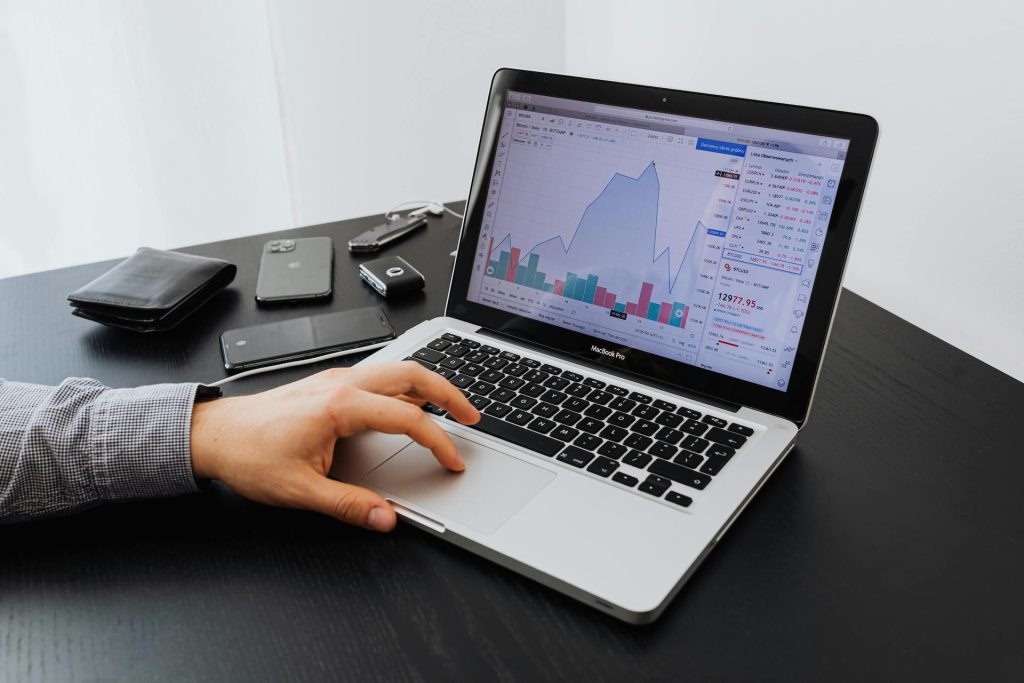What is trade management in Forex? Forex trade management is the cornerstone of successful currency trading. Unlike other markets, the forex market is highly volatile, operating 24 hours a day across different time zones.
This dynamic environment presents traders with both opportunities and challenges. Proper trade management is essential for mitigating risks and maximising profits. Without it, even the most well-thought-out trading strategy can result in significant losses.
In this article, we will explore advanced techniques and strategies for managing forex trades. By the end of this guide, you will have a robust understanding of managing your forex trades with precision and confidence.
What is Forex Trade Management?
Forex trading is not just about entering and exiting trades; it’s about managing those trades effectively. Trade management involves a series of actions and decisions that a trader takes after placing a trade. It encompasses everything from setting stop losses and taking profits to adjusting position sizes and trailing stops.
Here are several key components of Forex trade management:
- Risk Management: The foundation of trade management, risk management ensures you do not lose more than a predetermined amount on any trade.
- Position Sizing: Proper position sizing is crucial to ensure your trade does not expose you to undue risk.
- Stop Losses: A stop-loss order is a predefined point at which you will exit a losing trade to prevent further losses.
- Take Profits: This is where you will exit a winning trade to lock in profits.
- Trailing Stops: A dynamic stop loss that moves in your favour as the market price moves.

Risk Management: The Pillar of Successful Forex Trading
Risk management is a fundamental aspect of forex trading that aims to minimise the impact of unfavourable market movements on a trading account, thereby protecting your capital from significant losses.
This involves identifying and evaluating various trading risks, such as market, liquidity, leverage, and currency risks. By monitoring and managing these risks, traders can effectively respond to changing market conditions, ensuring their trading strategy remains robust.
Essential risk management tools include stop-loss orders, which automatically close a position when it reaches a predefined loss level, thus preventing further losses. Similarly, take-profit orders allow traders to secure profits when the market reaches a specified price level, locking in gains before the market can reverse.
Diversification is another crucial strategy, spreading investments across different currency pairs, markets, and time frames. This approach reduces the impact of any single trade or market event on the overall portfolio, providing a more stable and resilient trading strategy.
Risk management is the bedrock of any successful trading strategy. It involves determining how much capital you will risk on a single trade. A common rule of thumb is to risk no more than 1-2% of your trading capital on any given trade.
- Calculating Risk in Forex Trading: To calculate risk, consider the size of your trading account, the position size of your trade, and the distance between your entry point and your stop loss. For example, if you have a $10,000 account and you are risking 2% per trade, your maximum risk per trade would be $200.
- Using Risk/Reward Ratios: A critical aspect of risk management is the risk/reward ratio. This ratio measures the potential profit of a trade relative to its potential loss. A favourable risk/reward ratio is typically 1:2 or higher, meaning you aim to make twice as much as you risk.
Forex Trade Management Strategies
Effective trade management strategies play a crucial role in determining success in forex trading. Implementing sound trade management techniques can help forex traders mitigate risks, maximize profits, and maintain discipline in their trading approach.
In this guide, we will explore various forex trade management strategies that traders can utilize to navigate the dynamic and volatile currency markets. Whether setting stop-loss orders, trailing stops, or position sizing, having a solid grasp of trade management is essential for achieving long-term success in forex trading.
1. Position Sizing: Balancing Risk and Reward
Position sizing is a crucial element of forex trade management that directly impacts your risk exposure. Your position size should be aligned with your risk tolerance and the size of your trading account.
- Determining Position Size: To determine your position size, you need to know your risk per trade and the number of pips between your entry point and stop loss. For example, if you risk $100 on a trade and your stop loss is 50 pips away, your position size would be two mini lots or 20,000 units.
- Adjusting Position Size for Volatility: Forex markets can be highly volatile, and adjusting your position size accordingly is essential. Consider reducing your position size in periods of high volatility to limit your risk.
2. Stop Losses: Protecting Your Capital
A stop-loss order is a critical tool in forex trade management. It allows you to set a predefined point to exit a losing trade, protecting your capital from further losses.
- Setting Effective Stop Losses: When setting a stop loss, it’s important to consider market volatility, support and resistance levels, and your overall trading strategy. Avoid setting stop losses too close to your entry point, as this can result in being stopped out prematurely.
- Trailing Stops: Maximizing Profits While Limiting Losses A trailing stop is a dynamic stop loss that moves with the market price. As the price moves in your favour, the trailing stop adjusts to lock in profits while limiting potential losses. Trailing stops are handy in trending markets, allowing you to capture more significant profits.
3. Take Profits: Locking in Gains
Taking profit orders is essential for locking in gains on winning trades. Just as stopping losses protects you from excessive losses, taking profits ensures you capture earnings before the market reverses.
- Setting Take Profit Levels: To set practical take profit levels, consider key technical levels such as support and resistance, Fibonacci retracements, and moving averages. Your take profit level should also be aligned with your risk/reward ratio.
- Scaling Out of Trades: Scaling out involves taking partial profits at predetermined levels while letting the remaining position run. This strategy allows you to lock in profits while still participating in potential market moves.

The Role of Psychology in Forex Trade Management System
Psychology plays a significant role in trade management strategy Forex. The ability to manage emotions such as fear and greed can make the difference between success and failure in the forex market.
- Staying Disciplined: Discipline is key to successful trade management. Sticking to your trading plan, even in the face of market volatility, helps you avoid impulsive decisions that can lead to losses.
- Managing Emotions: Emotions such as fear and greed can cloud your judgment and lead to poor trade management decisions. It’s important to stay calm and objective, especially during market turbulence.
- Developing a Trading Routine: A consistent trading routine can help you stay focused and disciplined. This includes regular analysis, journaling your trades, and reviewing your performance.
Forex trade management is a multifaceted discipline that requires a deep understanding of risk, reward, and market dynamics. You can significantly enhance your trading performance and achieve long-term success in the forex market by implementing effective risk management, position sizing, stopping losses, and taking profits.
As you continue to develop your skills, remember that successful forex trade management is not just about following rules, it’s about adapting to changing market conditions and continuously refining your approach.
Vestrado: The Best Forex Trading Management Software
When mastering forex trade management, it can be invaluable to be part of a community that shares insights, strategies, and experiences. Vestrado is one of the best forex trading management software available today, offering a wealth of resources tailored to novice and experienced traders.
What sets Vestrado apart is the expert guidance provided by seasoned traders, who offer valuable advice on managing trades effectively. In addition, members benefit from real-time market insights and trading signals, which are crucial for making informed decisions in the fast-paced world of forex trading.
Vestrado’s community fosters a collaborative learning environment where traders actively share their experiences and strategies. This culture of sharing not only accelerates learning but also promotes continuous improvement among its members.
Furthermore, Vestrado provides an extensive library of educational resources for traders of all skill levels, from beginners to advanced.
By joining Vestrado, traders can significantly enhance their forex trade management skills, gain access to exclusive tools, and connect with a network of like-minded individuals equally committed to achieving success in the forex market.





